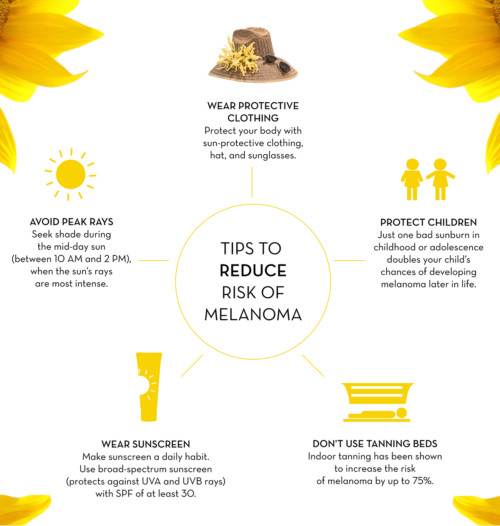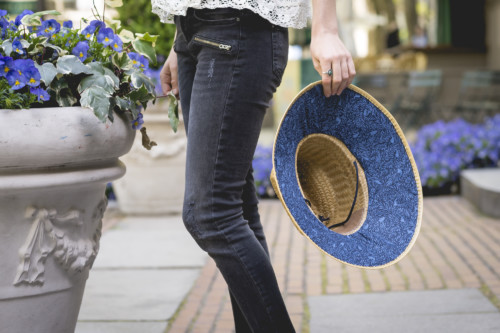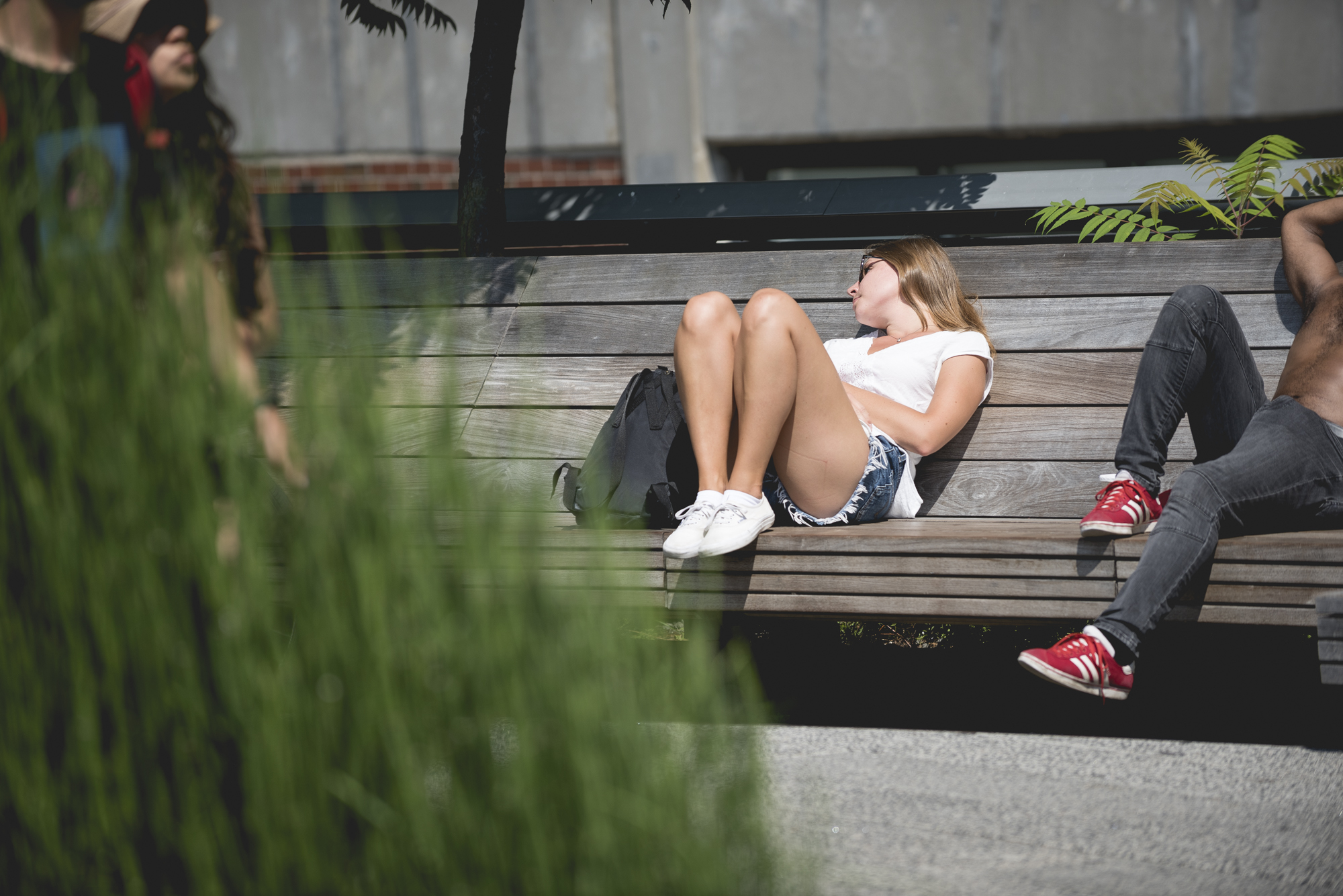
May Is Melanoma Awareness Month: Here’s What You Need To Know
Many twenty-somethings know that the best way to prevent wrinkles and premature aging is to start wearing sunscreen daily, under or in place of makeup, beginning no later than your twenties. But did you know that one in five Americans will develop skin cancer in their lifetime, and that melanoma is one of the most preventable cancers?
May is Melanoma Awareness Month, and it’s a good time to start thinking about how (when, and where) to stay sun-safe this summer. Antioxidant serums, chic hats, and the best times to cover up are just a few of the #SafeSunHacks we’ll discuss below, in addition to making some product reccomendations that have been personally vetted by our staff.
We also recently spoke with Louise M. Perkins, Ph.D., Chief Science Officer of the Melanoma Research Alliance, to get some insight into the state of skin cancer research and why everyone (yes, even you) should apply at least a shot glass of sunscreen at the beach:
“While not the most common of the various types of skin cancer, Melanoma is the deadliest,” says Perkins. “What we know from using a variety of cutting edge scientific techniques is that there is clear evidence for ultraviolet light induced evidence of damage to the DNA. What that means is exposure to UV light from either the sun or a tanning bed is clearly linked to melanoma.”
“People do all these things– we run, we eat healthy, we see the doctor, we drink water, we take our vitamins– so why would we neglect the largest organ in our body, which is our skin?”
People with fair skin, red or blonde hair, light eyes, more than 50 moles, a history of sunburn or UV exposure, and a family history of skin cancer are at elevated risk for melanoma. Studies show that spray sunscreens do not work as effectively as the kind you have to rub in, and most people do not use enough of it. “There are a number of studies that show that more sunscreen is better,” says Perkins. “The recommendation is to use a shot glass of sunscreen to cover your entire body.” Sunscreen should then be reapplied every two hours, or after being in the water and toweling off– and this is true even if you aren’t at the beach.
Our Staff Reccomendations
Our entire staff are devoted to sun protection, and over the years we’ve collectively come up with our own “sun hacks”. (For example, Garden Collage Founder and CEO Daisy Helman recommends wearing breathable gardening gloves like Foxgloves whenever biking in the sun, as the backs of our hands are one of the fastest-aging parts of the body that often go neglected when it comes to sun protection.) Having read extensive dermatological reccomendations by leading industry experts including Dr. Julie Karen of Complete Skin MD, we also recommend wearing an antioxidant serum like [easyazon_link identifier=”B01MA35EGM” locale=”US” tag=”gardcoll03-20″]Derma-e’s Vitamin C serum[/easyazon_link] underneath sunscreen to maximize protection and anti-aging benefits. Consider wearing a hat whenever in the sun, especially between the hours of 10 AM and 2 PM, and especially if you don’t like wearing sunscreen or if you forget to reapply. Light-blocking clothing is also the only way to be 100% sure you are blocking the sun’s harmful rays (if running or surfing, look for clothing with a [easyazon_link identifier=”B01N0IGSSX” locale=”US” tag=”gardcoll03-20″]UPF+ fabric[/easyazon_link] of 50 or higher).
“If you just need that glow, use a sunless tanner.”
Generally speaking, we also like to toggle between azobenzene-free sunscreens and more “natural” ones, reserving the more aggressive chemicals for periods of intense sun exposure (like being at the beach or a dessert). Perkins points out with a word of caution, however: “Titanium Dioxide is a chemical, too. Just because it’s ‘natural’ doesn’t mean it’s safe,” and that’s an important thing to consider when choosing the sunscreen that is right for you. (More information about how sunscreens are regulated in the United States can be found here.)
To that end, our staff loves Pratima Skincare’s Neem Rose Face Sunscreen, [easyazon_link identifier=”B00HZ2BPWI” locale=”US” tag=”gardcoll03-20″]Supergoop SPF 40[/easyazon_link], anything by [easyazon_link identifier=”B002CML1XE” locale=”US” tag=”gardcoll03-20″]La Roche-Posay[/easyazon_link], [easyazon_link identifier=”B004D2826K” locale=”US” tag=”gardcoll03-20″]Neutrogena’s Clear Face SPF 55[/easyazon_link] line, and [easyazon_link identifier=”B002MSN3QQ” locale=”US” tag=”gardcoll03-20″]EltaMD skincare’s SPF 46[/easyazon_link] sunscreen– but that’s just us! It’s also worth investing in polarized, 100% UV blocking sunglasses, as there is currently no requirement for designer glasses to be polarized or to block 100% of UV rays that can cause cataracts after long term exposure. (Warby Parker sunglasses, for example, only block 98%.) Look for a sticker or ask a sales person to confirm that your sunglasses block harmful rays before buying.
Vitamin D + Tanning
But what about Vitamin D? “In our opinion, that’s not a good reason to go out and incur ultraviolet damage– but its definitely a conversation you should have with your doctor,” Perkins says. (A dermatologist at Marmur Medical once told me that you get enough Vitamin D on the back of your hands after 5 minutes of sun exposure per day.)
And tanning? “A tan is a reflection of damage to your skin; a tan itself if your body trying to protect you from the damage its incurred,” says Perkins. “You really don’t know what you’re going to be [exposing] in your DNA to do UVA exposure.” The verdict: try to avoid tanning just as much as sunburn. “People do all these things– we run, we eat healthy, we see the doctor, we drink water, we take our vitamins– so why would we neglect the largest organ in our body, which is our skin?”
“A lot of us don’t experience the consequences of sun exposure until we’re a bit older– so this isn’t just about skin cancer and melanoma. Do you really want those wrinkles when you get older?” she adds. “If you just need that glow, use a sunless tanner.”
For more information on the current state of melanoma research in the United States, visit the Melanoma Research Alliance.




































